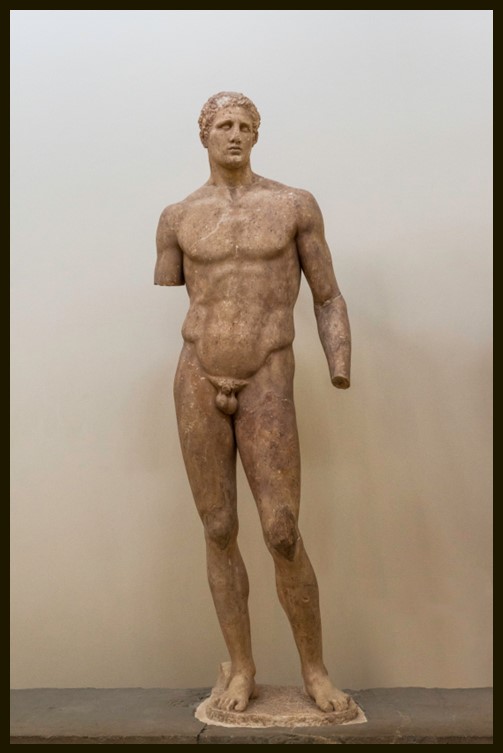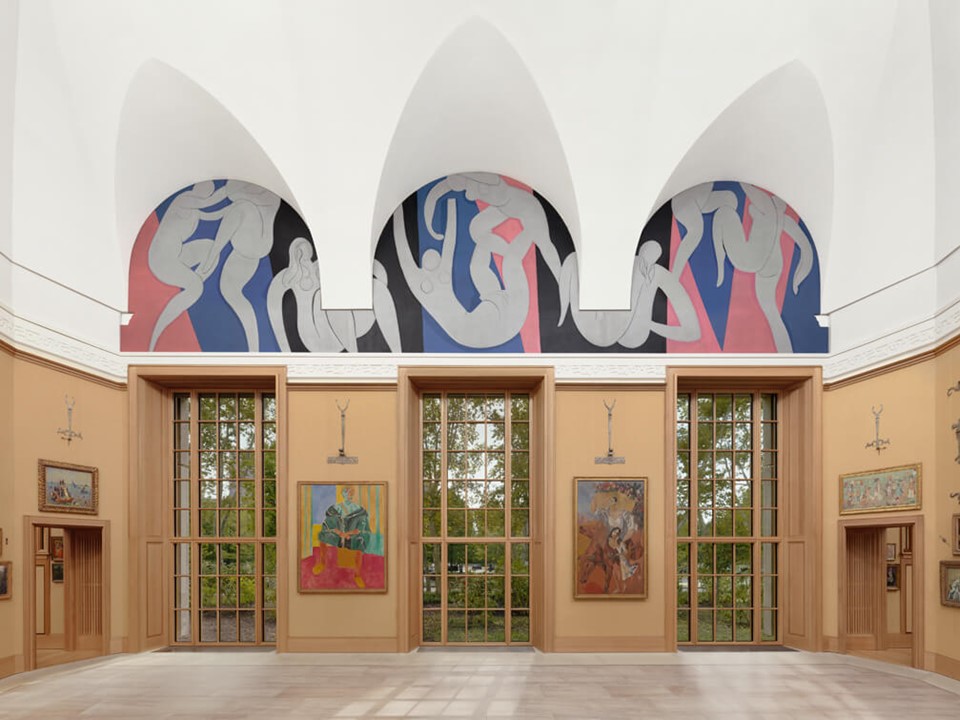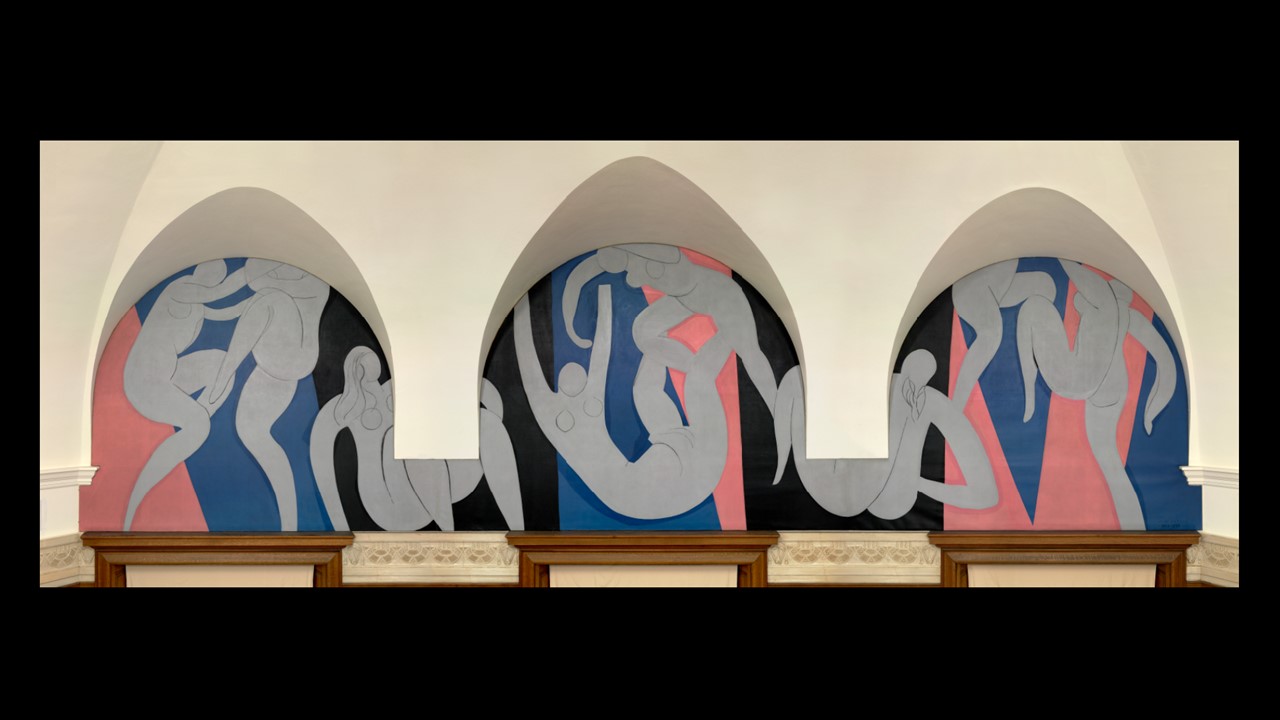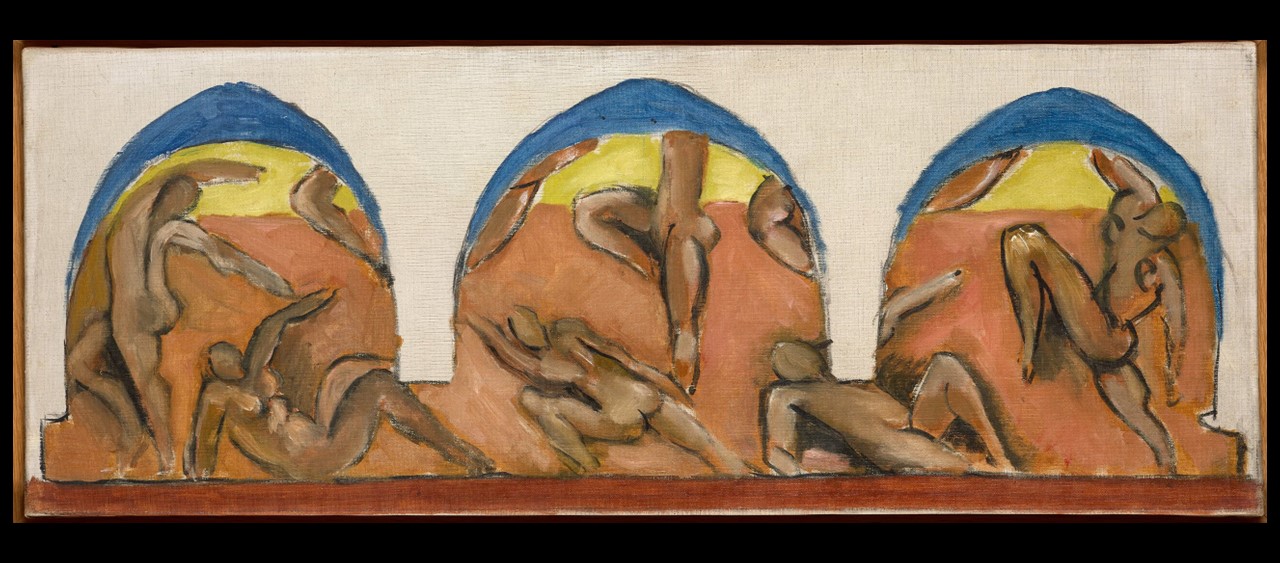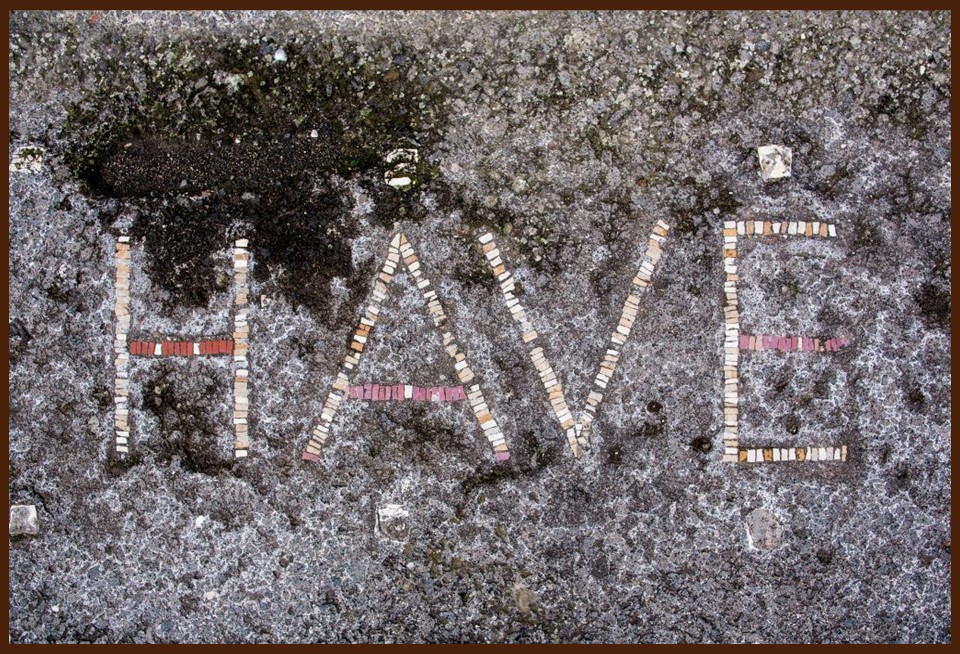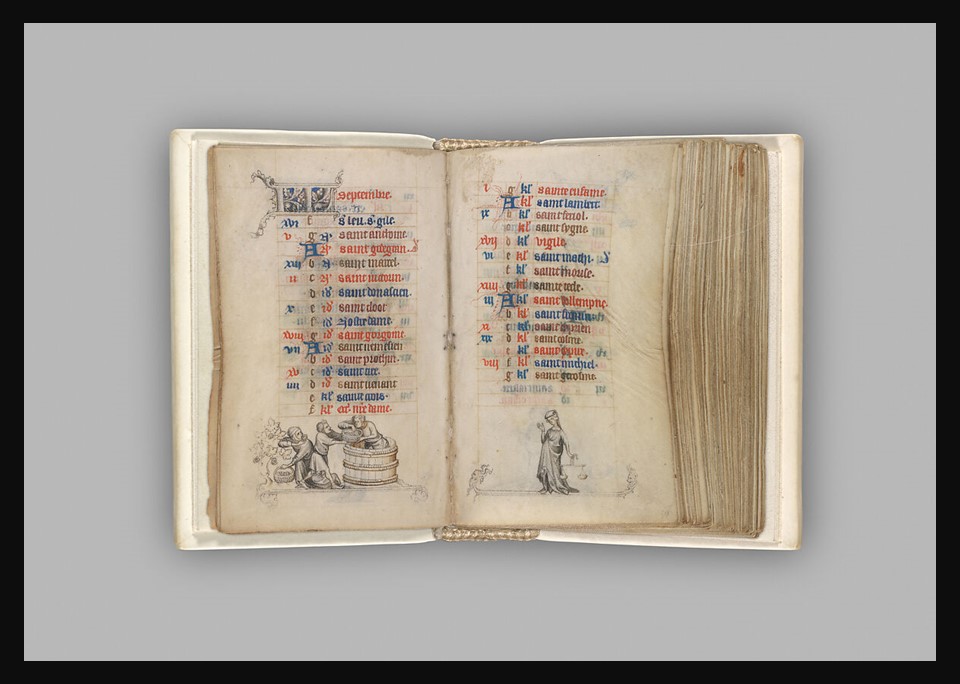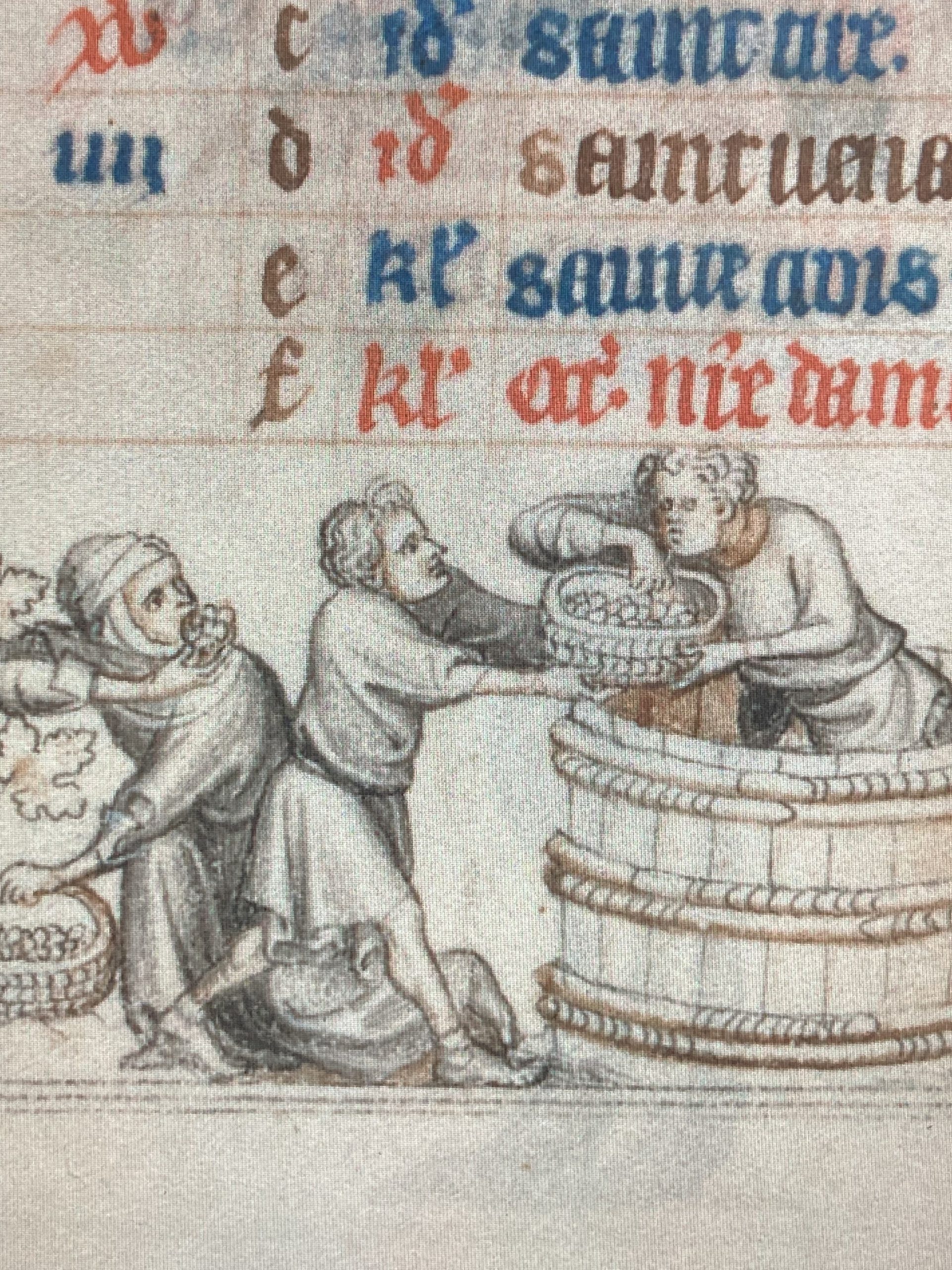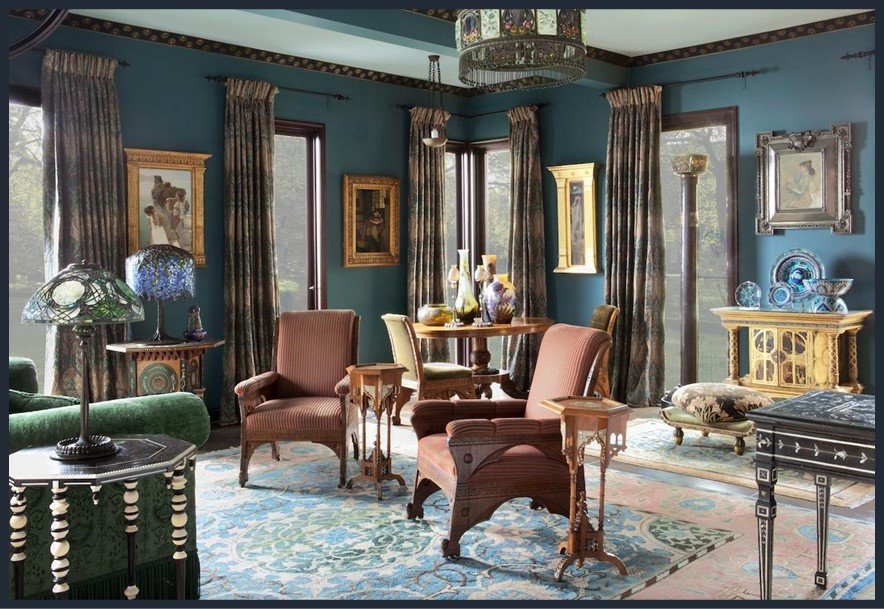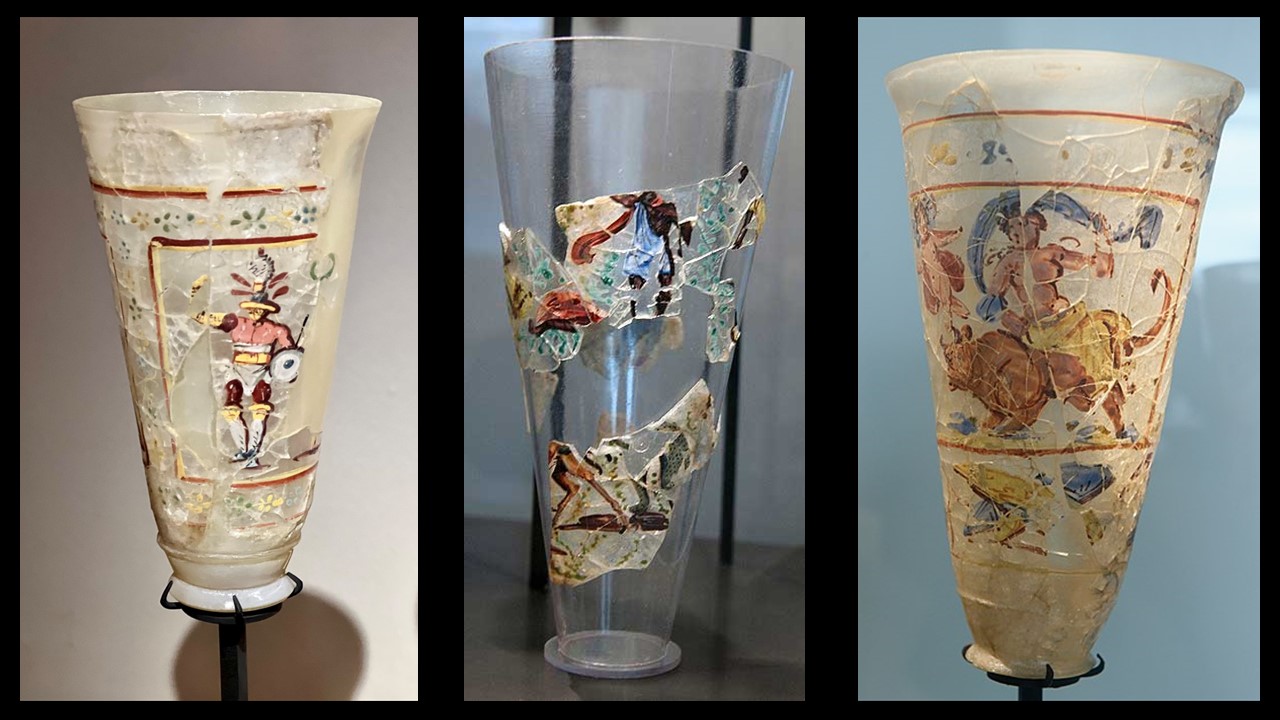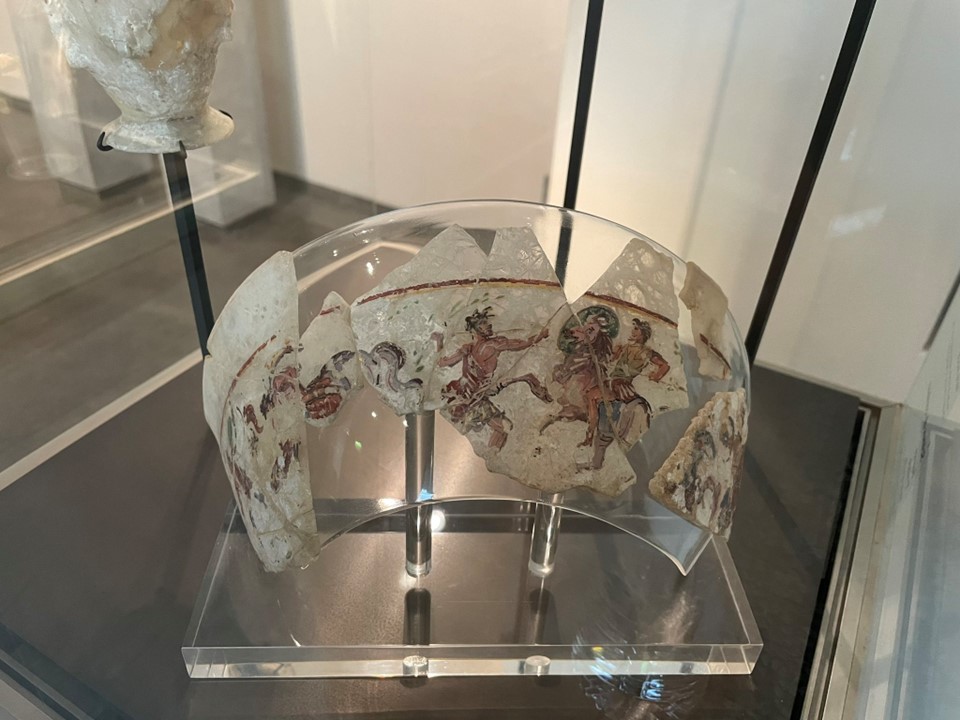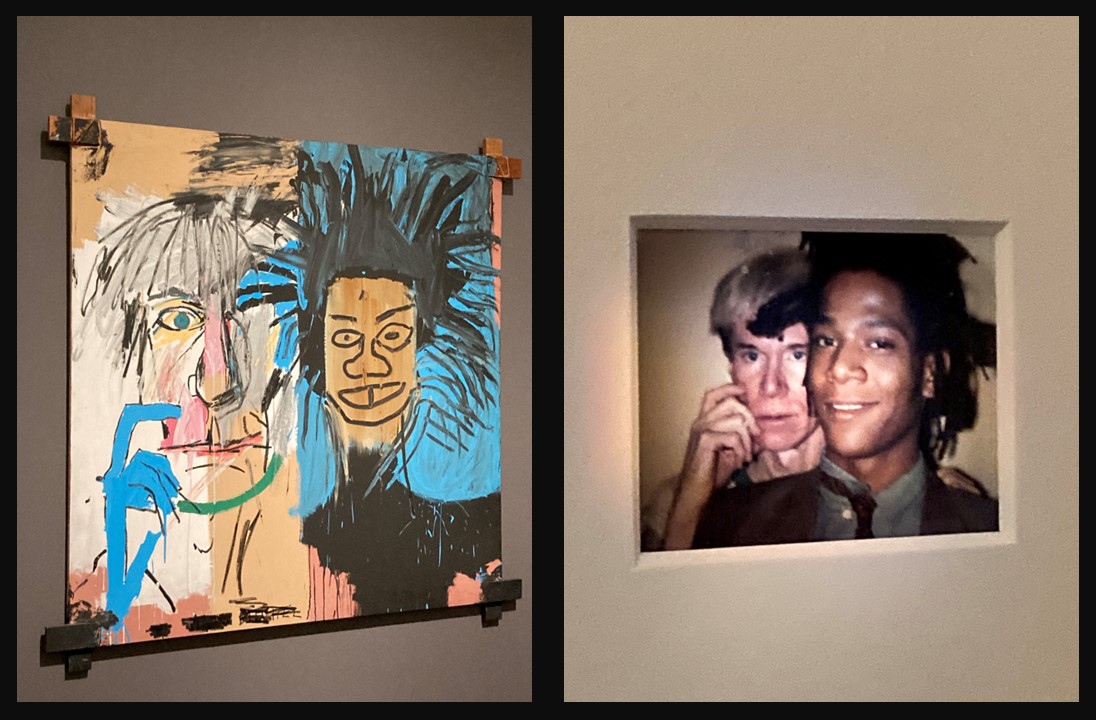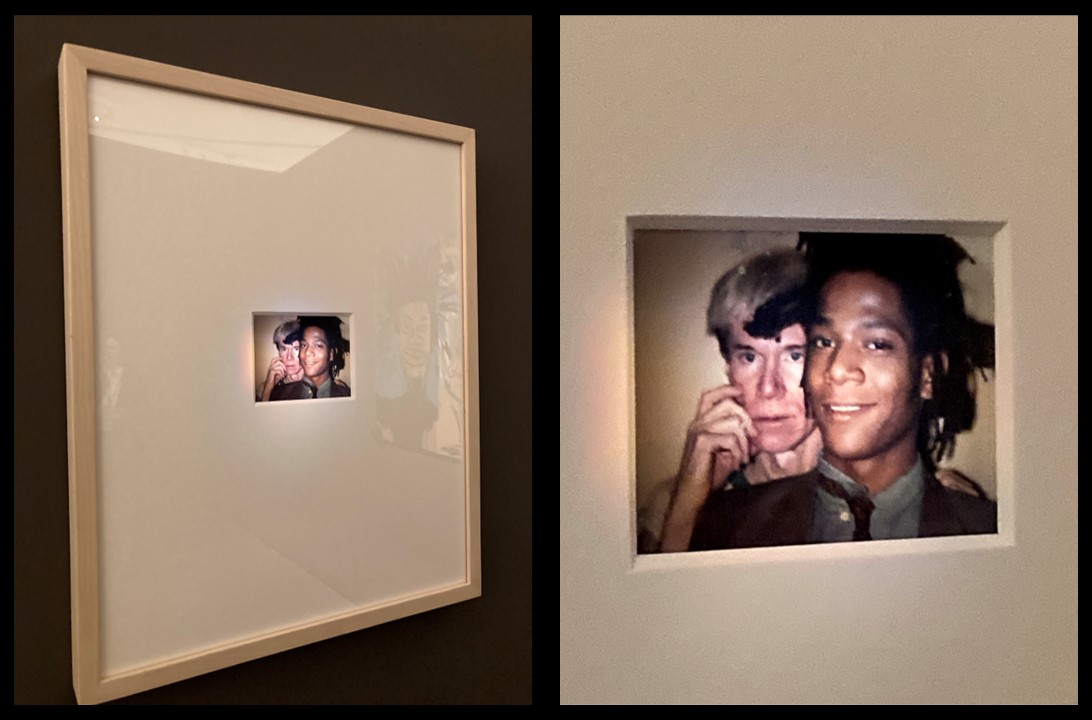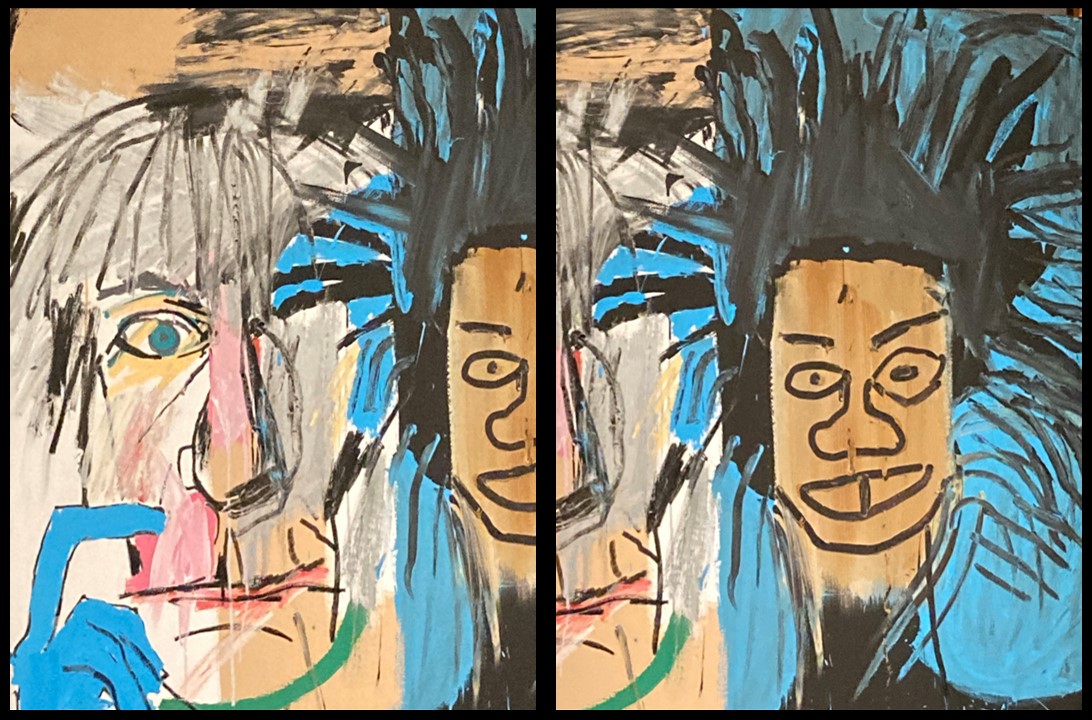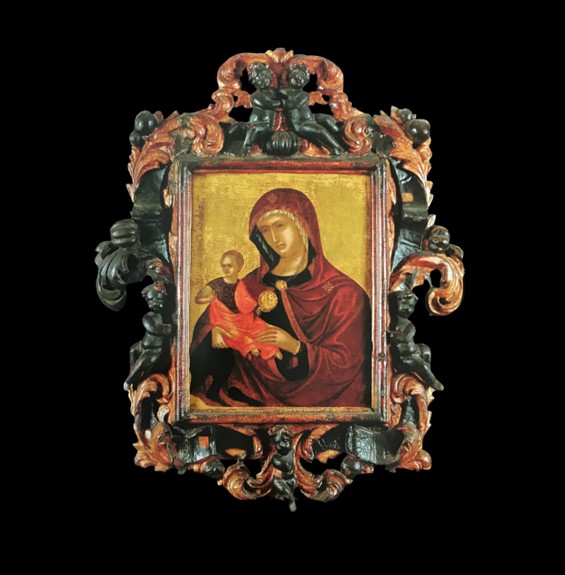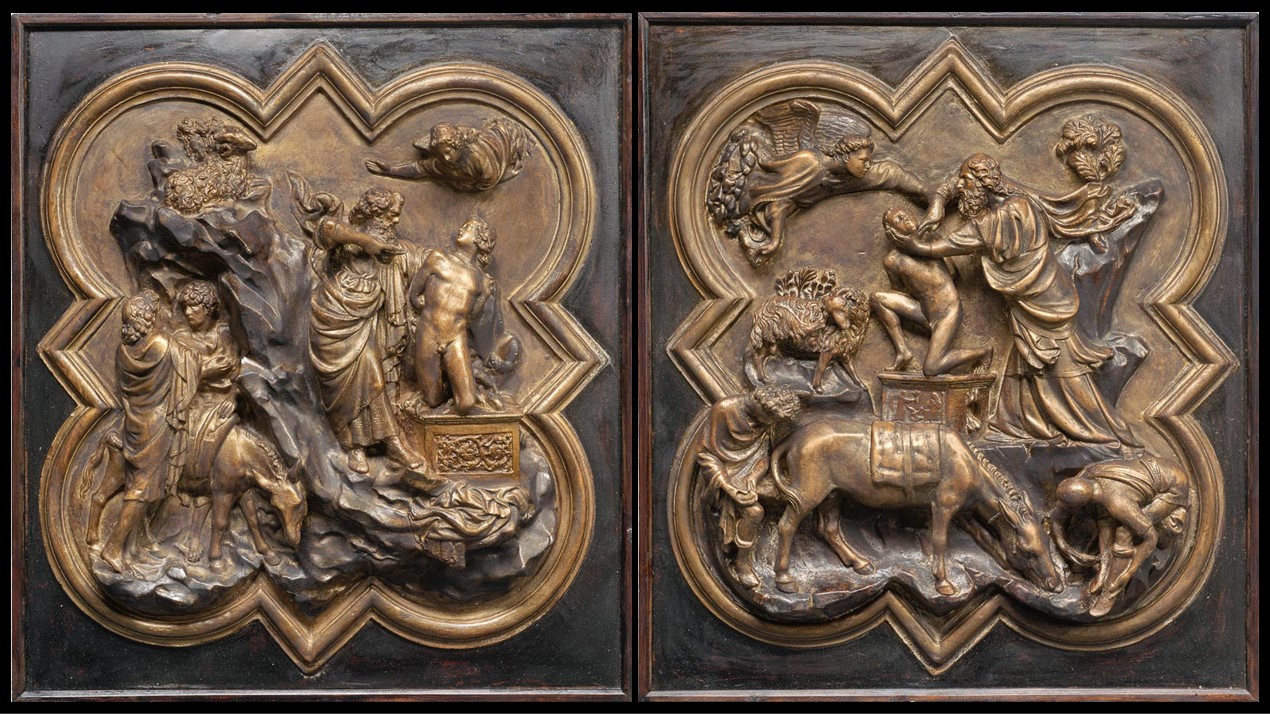
Sacrifice of Isaac, 1401, Gilded Bronze, 45 × 38 cm, Museo Nazionale del Bargello, Florence, Italy
Filippo Brunelleschi, 1377-1446
Sacrifice of Isaac, 1401, Gilded Bronze, 41 × 36 cm, Museo Nazionale del Bargello, Florence, Italy
https://idole-rivalen.khm.at/en/
In 1400, a competition was announced for a bronze double door at the Baptistery in Florence. While such contests were no rarity, this one is considered a classic of its kind. A jury of 34 declared the winner to be Lorenzo Ghiberti, whose composition was regarded as better balanced, not to mention its using around seven kilograms less of the valuable material. Hardly any history of Renaissance art fails to mention this event as a founding moment. The Brunelleschi vs. Ghiberti competition is the best introduction, in my humble opinion, to 15th-century Italian Renaissance Art. https://idole-rivalen.khm.at/en/
For today’s BLOG POST allow me to quote and remember how Giorgio Vasari in his Lives of the Most Excellent Painters, Sculptors, and Architects, first published in 1550 and dedicated to Grand Duke Cosimo I de’ Medici, describes the famous 1401 competition for a bronze double door at the Baptistery in Florence. The life of Filippo Brunelleschi, and the Life of Lorenzo Ghiberti, as narrated by Vasari, provide the necessary information on how the competition and Lorenzo’s victory were seen in the 16th century by the artist/author considered to be the first Art Historian ever! https://filippobrunelleschifacts.tumblr.com/post/109790232722/vasaris-lives-of-the-artists-life-of and http://www.artist-biography.info/artist/lorenzo_ghiberti/

Sacrifice of Isaac, 1401, Gilded Bronze, 41 × 36 cm, Museo Nazionale del Bargello, Florence, Italy
https://www.artesvelata.it/concorso-1401/
From the life of Filippo Brunelleschi… in the year 1401, now that sculpture had risen to so great a height, it was determined to reconstruct the two bronze doors of the Church and Baptistery of San Giovanni, since, from the death of Andrea Pisano to that day, they had not had any masters capable of executing them. This intention being, therefore, communicated to those sculptors who were then in Tuscany, they were sent for, and each man was given a provision and the space of a year to make one scene; and among those called upon were Filippo and Donato, each of them being required to make one scene by himself, in competition with Lorenzo Ghiberti, Jacopo della Fonte [Jacopo della Quercia], Simone da Colle, Francesco di Valdambrina, and Niccolo d’ Arezzo. These scenes, being finished in the same year and being brought together for comparison, were all most beautiful and different one from the other; one was well designed and badly wrought, as was that of Donato; another was very well designed and diligently wrought, but the composition of the scene, with the gradual diminution of the figures, was not good, as was the case with that of Jacopo della Quercia; a third was poor in invention and in the figures, which was the manner wherein Francesco di Valdambrina had executed his; and the worst of all were those of Niccolo d’ Arezzo and Simone da Colle. The best was that of Lorenzo di Cione Ghiberti, which had design, diligence, invention, art, and the figures very well wrought. Nor was that of Filippo much inferior, wherein he had represented Abraham sacrificing Isaac; and in that scene a slave who is drawing a thorn from his foot, while he is awaiting Abraham and the ass is browsing, deserves no little praise.
The scenes, then, being exhibited, Filippo and Donato were not satisfied with any save with that of Lorenzo, and they judged him to be better qualified for that work than themselves and the others who had made the other scenes. And so with good reasons they persuaded the Consuls to allot the work to Lorenzo, showing that thus both the public and the private interest would be best served; and this was indeed the true goodness of friendship, excellence without envy, and a sound judgment in the knowledge of their own selves, whereby they deserved more praise than if they had executed the work to perfection. Happy spirits! who, while they were assisting one another, took delight in praising the labors of others. How unhappy are those of our own day, who, not sated with injuring each other, burst with envy while rending others? The Consuls besought Filippo to undertake the work in company with Lorenzo, but he refused, being minded rather to be first in an art of his own than an equal or a second in that work. Wherefore he presented the scene that he had wrought in bronze to Cosimo de’ Medici, who after a time had it placed on the dossal of the altar in the old Sacristy of San Lorenzo, where it is to be found at present; and that of Donato was placed in the Guild of the Exchange.
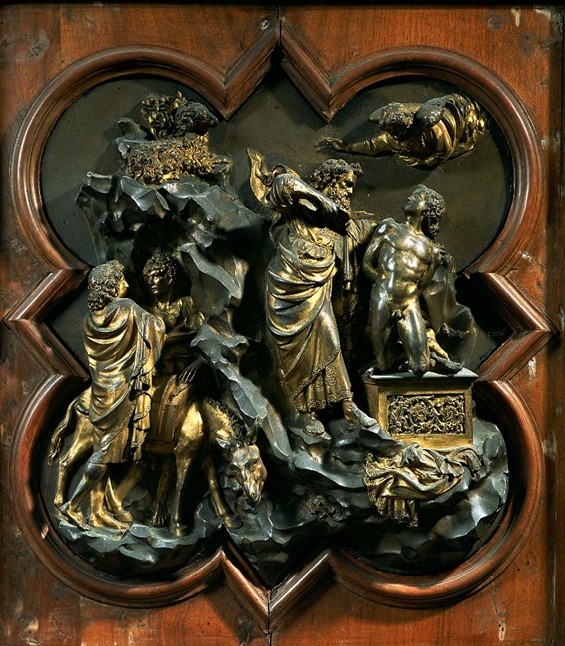
Sacrifice of Isaac, 1401, Gilded Bronze, 45 × 38 cm, Museo Nazionale del Bargello, Florence, Italy
https://www.artesvelata.it/concorso-1401/
From the Life of Lorenzo Ghiberti… He had not been long absent from home when the plague ceased, and the Signoria of Florence and the art of the merchants, seeing that there were a number of excellent artists in sculpture at that time, both foreigners and Florentines, thought that it would be a favourable opportunity to make the other two doors of S. Giovanni, the ancient and principal church of the city, a matter which had frequently been discussed. It was arranged by them that all the masters considered to be the best in Italy should be invited to come to Florence to compete in making bronze panels similar to those which Andrea Pisano had done for the first door. Ghiberti was working at Lesare at the time but although offers of higher wages were promised, he availed nothing, for to Lorenzo it seemed worth a thousand years to return to Florence, and he accordingly set out and reached his home in safety. Many foreigners had already arrived and reported themselves to the consuls of the arts. From among them seven masters in all were selected: three Florentines, and the remainder Tuscans. A provision of money was set apart for them, and it was stipulated that within a year each of them should produce, as an example of his skill, a bronze panel of the same size as those of the first door. It was determined that the scene represented should be the sacrifice of Isaac by Abraham, which was considered to be a good subject in which the masters could grapple with the difficulties of the art, because it comprises a landscape, figures both nude and draped, and animals, while the figures in the foreground might be made in full relief, those in the middle distance in half-relief, and those in the background in bas-relief. The competitors for this work were: Filippo di ser Brunellesco, Donato and Lorenzo di Bartoluccio, Florentines, and Jacopo dalla Quercia of Siena, Niccolo d’Arezzo his pupil, Francesco di Vandabrina, 1 and Simone da Colie, sumamed “of the bronzes,” who all promised the consuls to have their panels ready at the appointed time.
They set to work and devoted all their study and diligence, all their strength and knowledge, to surpass each other, keeping what they did close secret, so that they might not light upon the same ideas. Lorenzo alone, who enjoyed the help of Bartoluccio, who made him take great pains and prepare many models before he resolved upon adopting any one of them, continually brought his fellow citizens, and also passing strangers if they understood the trade, to see his work and hear their opinion. By the aid of their criticisms he was enabled to produce a model which was beautifully made and absolutely without a fault. Having shaped his figures and cast the whole in bronze, it proved excellent; and he and his father, Bartoluccio, polished it with such devotion and patience that it was impossible for it to have been better finished. When the time arrived for it to be exhibited in the competition, his panel and those of the other masters were handed over to the art of the merchants to be adjudicated upon. When they came to be examined by the consuls and several other citizens many various opinions were expressed. Numbers of strangers had assembled in Florence, some painters, some sculptors, and some goldsmiths, who were invited by the consuls to come and judge the works in conjunction with others of the same professions who lived in Florence. They numbered thirty-four persons in all, each of them being an adept in his art, and although there were differences of opinion among them, some preferring the style of one and some that of another, yet they were agreed that Filippo di ser Brunellesco and Lorenzo di Bartoluccio had composed and finished a larger number of figures better than Donato had done, although his panel exhibited great powers of design. In that of Jacopo dalla Quercia the figures were good but lacking in delicacy, in spite of the good design and the care bestowed. The work of Francesco di Vandabrina contained good heads and was well finished, but the composition was confused. That of Simone da Colle was a good cast, because he was a founder by profession, but the design was not very good. The production of Niccolo d’Arezzo, showing great skill, was marred by stunted figures and absence of finish. Lorenzo’s alone was perfect in every part, and it may still be seen in the audience chamber of the art of the merchants. The whole scene was well designed and the composition excellent, the figures being slender and graceful, the pose admirable and so beautifully finished that it did not look as if it had been cast and polished, but rather as if it had been created by a breath. Donato and Filippo, when they perceived what diligence Lorenzo had devoted to his work, withdrew to one side and agreed that the work ought to be given to him, for it seemed to them that public and private interests would thus be best served, and as Lorenzo was a young man, not past twenty, he would be able to realize in the production of this work the great promise of his beautiful scene, which; according to their judgment, he had made more excellently than the others: adding that it would be more shameful to dispute his right to preeminence than generous to admit it. Accordingly Lorenzo began on that door opposite the opera of S. Giovanni,’ constructing a large wooden frame for a part of it of the exact size he desired, in the shape of a frame with the ornamentation of heads at the angles about the spaces for containing the scenes and the surrounding friezes. After he had made the mold and dried it with all diligence, he set up a huge furnace, which I remember having seen, and filled the frame with metal. He did this in some premises he had bought opposite S. Maria Nuova, where the hospital of the weavers, known as the Threshing floor, now stands. But realising that all was not going well, he did not lose courage or become distracted, but traced the cause of the disorder and altered his mold with great quickness without anyone knowing it, recasting the world, which came out most successfully. He went on similarly with the rest of the work, casting each scene separately, and then putting them in their appointed places. The division of the scenes was similar to that adopted by Andrea Pisano in the first door designed for him by Giotto.
It is always interesting to go as close as possible to primary sources!
For a PowerPoint on the competition panels, please… Check HERE!
For a Video on the Competition Panels, please Check… smarthistory… https://smarthistory.org/filippo-brunelleschi-and-lorenzo-ghiberti-sacrifice-of-isaac/
Idols & Rivals, Artists in Competition (September 20, 2022 – January 8, 2023) was an interesting Exhibition in the Kunsthistorischen Museum in Vienna. It showed how in antiquity, the Renaissance, and the Baroque, artists competed with one another and how, in addition, they measured themselves against ancient models. This kind of competition has brought forth some of the best-known works in the history of art. Among the competitors were Brunelleschi and Ghiberti… https://idole-rivalen.khm.at/en/



